BARELY a trace of what was once the largest meatworks in the Southern Hemisphere remains at Wyndham today.
The historic site can be viewed in its entirety from the Five Rivers Lookout above, perched on the Bastion Range which towers over the far northern WA port town.
The WA Government-built meatworks originally supplied meat to Perth and to the WA gold fields and for export to the UK, employing between 1600 and 2000 workers during each May to September season.
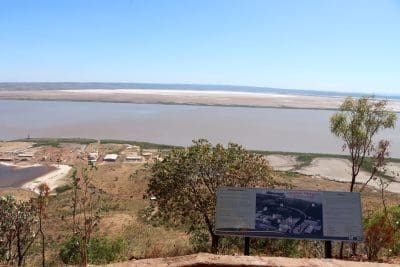
The site of the former Wyndham meatworks viewed from the Five Rivers Lookout above. Sign pictured in more detail below.
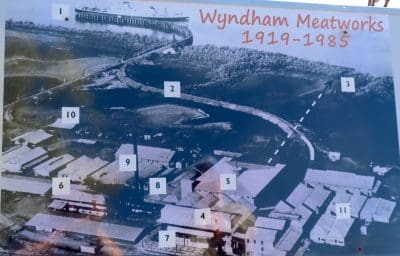
1. Jetty. 2. Railway line. 3. Blood Drain. 4. Slaughter Floor. 5. Boning Room, Freezers. 6. By-products. 7. Drying racks (cowhides). 8. Powerhouse. 9. Smokestack. 10. Carpenters workshop. 11. Storage.
More rich layers of history on the abattoir and the broader northern cattle industry can be found in the carefully tended Wyndham historical society museum, located in the town’s old courthouse on the drive out to the port.
Flying cattle class
One of the fascinating slices of pioneering history the museum documents is the “Air Beef” scheme which operated in the Kimberley from the late 1940s through to the early 1960s, and which gave new meaning to the term “flying cattle class”.
The Air Beef scheme was largely the creation of two men, Kimberley cattle producer Gordon Blythe and Australian National Airways (ANA) Planning and Development Manager, Ian “Grab” Grabowsky, who had both seen how air transport had been used before and during WW2 to supply isolated communities in Papua New Guinea with all manner of goods and cargo.
For Mr Blythe, the improving standard of air transport offered a compelling solution to a perennial problem for Kimberley cattle producers such as himself.
Cattle had to be walked hundreds of miles from stations to abattoirs in distant towns such as Wyndham, involving arduous journeys of several weeks across rocky ranges and sandy tracks, with the loss of weight and animals along the way.
If planes could be used to fly food and supplies into the mountains of the PNG highlands, why couldn’t Kimberley stations build their own small abattoir and then use aircraft to fly meat quickly and efficiently to abattoirs many miles away for further processing and export?
Mr Blythe conducted an early trial in 1946 with air transport company MacRobertson-Miller Aviation Co Ltd (MMA), accompanying four unchilled beef carcases on a Lockheed 10A Electra for a 10-hour, 2000 mile (3200km) flight from Mount House station to Perth, with one refuelling stop on the way.
The beef reportedly arrived in “perfect condition” and was donated to the Red Cross, raising £50 at auction.
With proof it could be done, Air Beef Pty Ltd was formed in 1948 with a £15,000 investment from a consortium including the airlines ANA and MMA and a group of WA pastoralists led by Mr Blythe.
The WA Government chipped in with a three-year interest-free loan of £10,000 per annum and a subsidy of 1d per lb of meat transported by air in the region during the first year.
Construction of a small abattoir at Glenroy station to slaughter cattle and quarter and chill the carcases was completed in May 1949 at a cost of £30,000. An air strip upgrade on the hard red ground was completed for just £100.
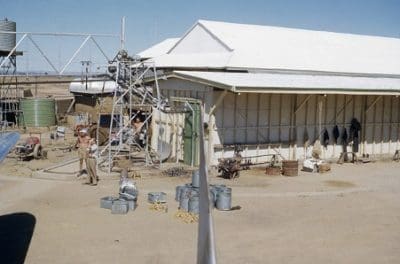
View from the aircraft of the abattoir at Glenroy with the chiller in the nearest building. Glenroy abattoir mages: Airways Museum.
Taking flight
Air Beef operations officially began on May 13, 1949, with a MMA DC-3 operating from Glenroy to Wyndham, where the quartered carcases were frozen and packed at the Government abattoir.
To achieve maximum weight reduction on the DC-3 aircraft, auxiliary fuel tanks were taken out as regular tanks carried more than enough petrol for the 75 minute flight. De-icing panels were also removed from the fuselage, as there was no risk of icing, and the automatic pilot was dispensed with, along with the cockpit sound-proofing. The journey was noisy, but “bearable if ear plugs were used”, according to one account.
Consequently the Air Beef version became the lightest DC-3 in the world, weighing just 6852kg instead of the normal 7355kg, which meant it could carry 4540kg of beef, instead of the previous 4080kg.
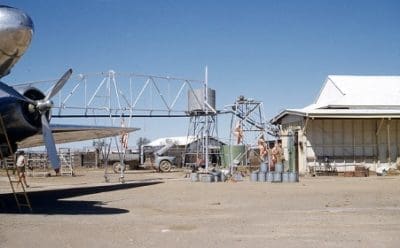
Carcases were moved from the chiller via a gantry to the parked aircraft. Carcasses were chilled at Glenroy prior to transport, but the aircraft was not refrigerated, the air temperature on the flight to Wyndham being low enough to keep the meat fresh.
The Air Beef system accepted cattle from various stations in the region (including Bedford Downs, Fossil Downs, Gibb River, Mount Hart, Mount House, Karunjie, Lansdowne, Spring Vale and Tableland among others), which were slaughtered at the abattoir at Glenroy, where the meat was graded according to its quality and chilled before being flown up to Wyndham. The producers would be paid according to weight and grade on the entire carcase.
By the end of the 1949 season the DC-3s had transported some 1,776 carcasses from Glenroy to Wyndham, with Air Beef Ltd reportedly “just about covering its expenses” in year one.
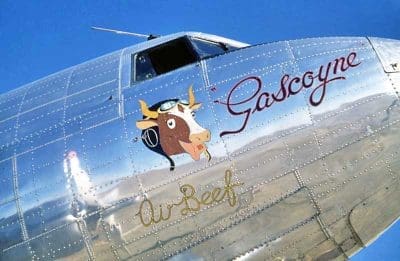
MMA Douglas DC-3 VH-MML Gascoyne shows off the Air Beef logo. Each of the MMA aircraft was given the name of a region of Western Australia.
By 1950, with the use of larger Bristol 170 Freighters, Air Beef was carrying up to 12,000lb (5,445kg) of beef on each of three trips a day, transporting a total of 3676 carcases for the year.
Additional benefits
One immediate result of the scheme was the upgrading of meat going to the abattoir, as cattle did not have to endure the arduous trek to Wyndham.
Station owners were also able to take advantage of the opportunity to backload DC-3s returning to Glenroy with food, machinery, salt for hides, fencing wire, corrugated iron and other vital supplies which would have otherwise taken days or weeks to arrive, or not at all during the wet season months, while also being delivered at lower cost the station owners and in better condition with less travel damage.
Valuable stud animals could also be transported efficiently and expediently via back loads to stations.
Flights operated during the dry season from May to August.
A snap freeze unit was installed at Glenroy in 1956 to supply demand from Europe, Singapore and the Australian domestic market for pre-packed, snap frozen beef. Accounts suggest the beef was able to be delivered in excellent condition to those markets and at prices for consumers cheaper than the ‘local’ product.
In 1959 a new abattoir opened at Derby, a deep water port closer to Glenroy, and all Air Beef operations switched from Wyndham to Derby.
The ambitious scheme operated successfully for 13 years, carrying beef from 55,529 cattle along with offal and hides, and backloading some 3870 tonnes of cargo from Wyndham and Derby to Glenroy and en-route cattle stations.
Annual volumes varied from around 3542 cattle in 1953 to a record in 1961 of 5695 head.
End of the Runway
Despite it’s success for more than a decade, Air Beef operations ceased operations after the end of the 1962 season.
By that year the Kimberley inland road network had been improved to the extent that it was now more economic to move live cattle by trucks to the coastal meatworks.
Between 1949-1962 Air Beef Pty Ltd flew 1,693 return flights Glenroy-Wyndham and 1,149 return flights Glenroy-Derby, carrying a remarkable total of 14,393 tonnes of beef and offal and 930 tonnes of hides from the Glenroy Station abattoir.
The Glenroy abattoir closed in 1964 and was virtually destroyed by fire in 1966.
In 2006 the ruins of the Air Beef abattoir at Glenroy Station were recognised by the Western Australian Government for their historical significance, and the abattoir and aerodrome were listed on the State’s Heritage Register.
WA Heritage Minister Francis Logan said the abattoir had played an important role in the development of the beef pastoral industry in the Kimberley and the North-West during the 20th Century.
The actual construction of the abattoir and aerodrome was also very innovative in such difficult climatic and logistical conditions, he said, as most of the materials had to be transported to the site by air.
A more comprehensive history of the Air Beef scheme, including a colourful first-hand account from an Air Beef pilot, can be read in a 2015 article by Nick Stroud, editor of The Aviation Historian, via a PDF download from this link.
Wyndham Meatworks
The Wyndham Meatworks itself was constructed by the WA Government and opened in 1919. In the 1960s it changed hands to private ownership and ran under several owners until 1985, pausing operations for only a few years from 1942-45 during WWII.
It initially supplied meat to Perth and to the WA gold fields and for export to UK, and for a time was the biggest meatworks in the Southern Hemisphere, employing between 1600 and 2000 workers during each May to September season.
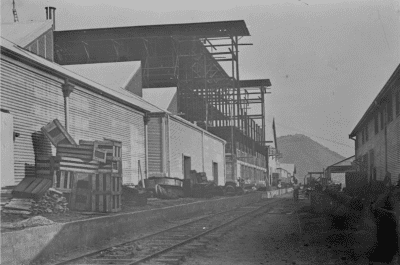
Wyndham meatworks under construction, showing the train lines used to transport meat to port. Image: State Library of WA
In addition to the beef delivered via the Air Beef scheme, stock were mainly walked into the meatworks from cattle stations via a range of stock routes, while carcases were placed in stocking net bags sewn on site and transported to the nearby Wyndham wharf on tramways via small kerosene-fuelled trains.
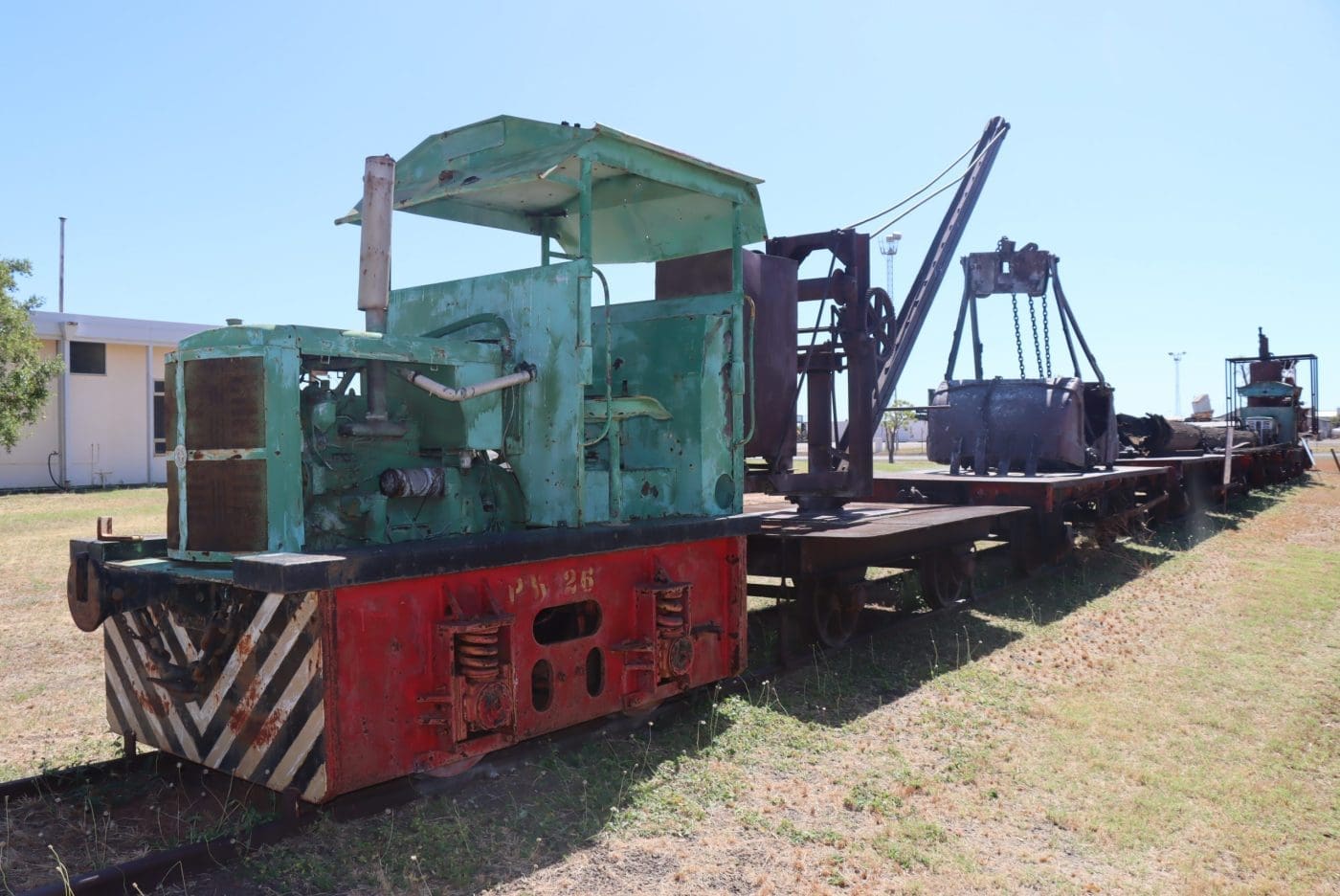
The remains of locomotives used on the tramway that transported meat from the plant to the wharf at Wyndham.
In total more than two million cattle were processed at Wyndham over 62 seasons.
The site included a jetty, power station, freezing works, cannery, rail system, engineering and carpenters workshops, stores and canteens, staff housing, dance hall, outdoor picture theatre and tennis courts.
Staff included slaughtermen, butchers, boiler makers, barrel makers, hide preparers, machine shop workers, packers, engineers, carpenters, cooks and bag makers.
The plant also produced canned meat for UK brand Bovril.
The ‘overflow’ pipe draining the slaughter floor crossed the mudflats to the gulf through a 10’ (foot) clay pipeline, known as the “blood drain”, where at the shores edge awaited “an assortment of small and large fish and crocodiles”.
It was a remote life, but one with “a strong sense of community”, Walkley-award winning journalist Keith Willey wrote about Wyndham in a 1962 newspaper article.
“If a mate is down on his luck you help him and you don’t count the cost.
“Over there in the meatworks when a man was killed on the job, everyone in the building contributed a day’s pay to the widow – a total of 1500 pounds.
“Mateship is not yet a dead word in Wyndham.”

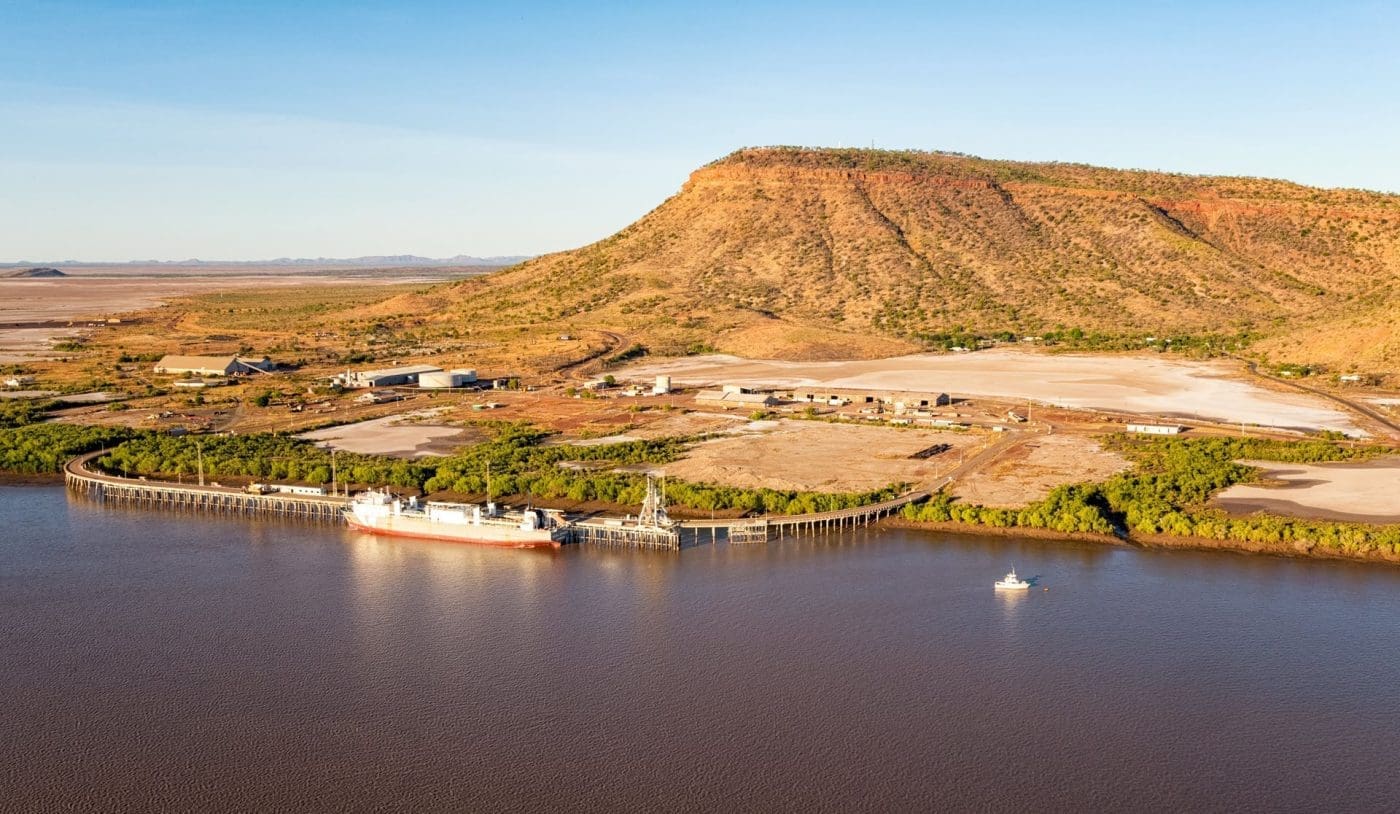
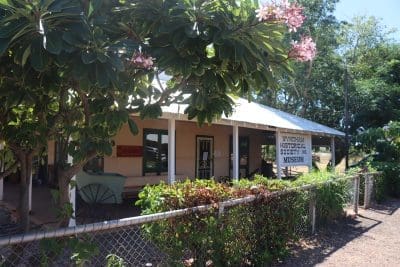
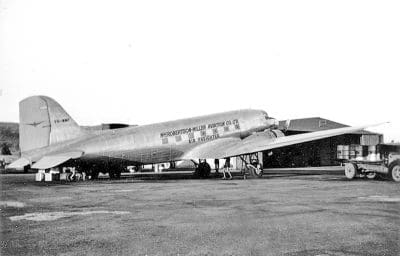
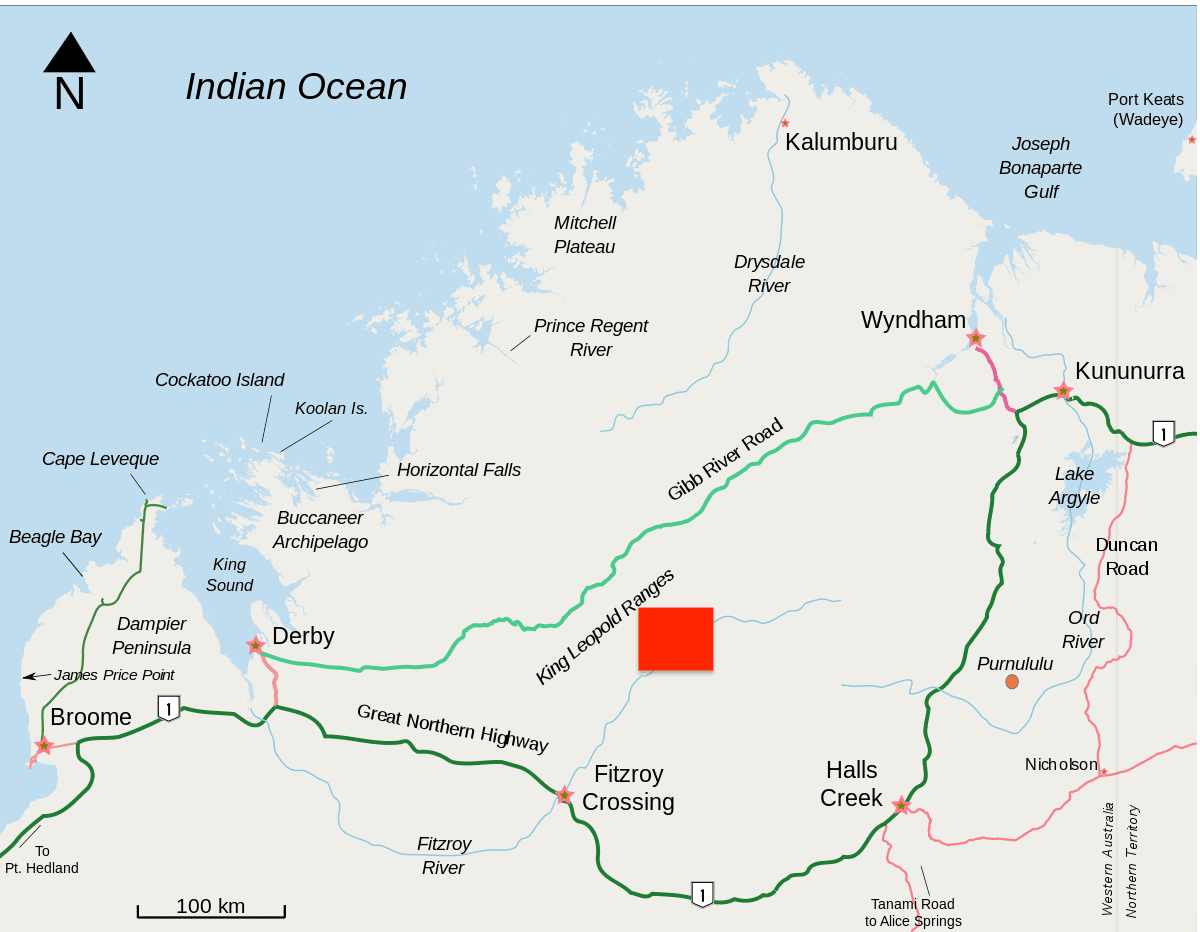
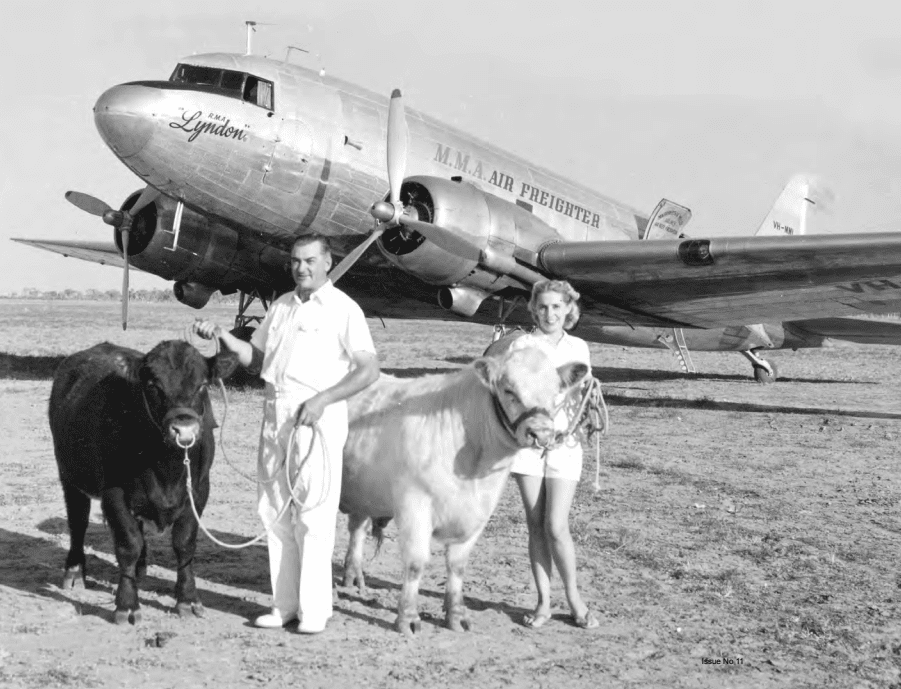
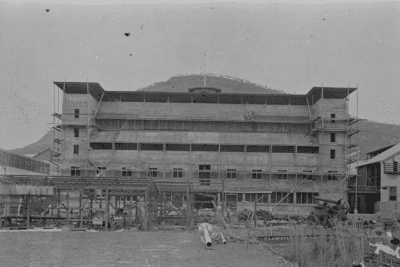
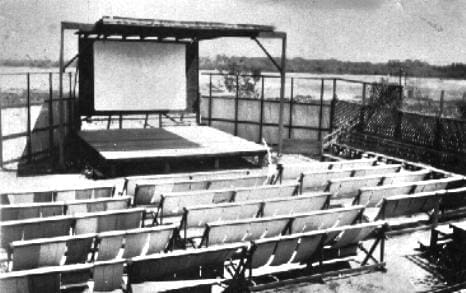
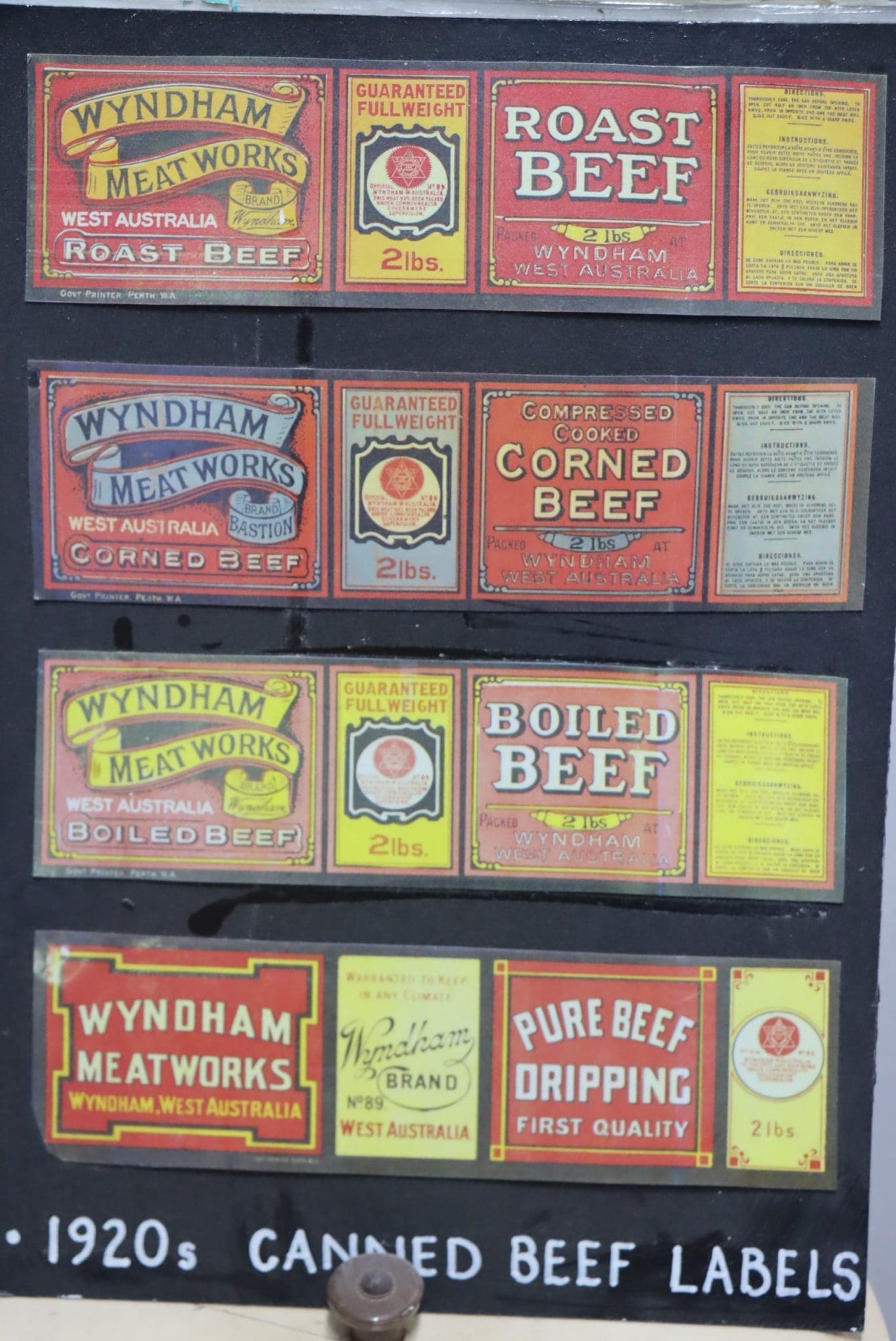
Hi, I was Wondering if any remembers a man by the Name of William (Bill) Richards who worked in the Wyndham meat works in 1983/1984? he was 6.3 with light brown/ dirty blond hair.
My father was a meat inspector at Glenroy , Wyndham and Broome. During WW2 he was sent to Broome to inspect meat destined for the AIF.
One story he told me about Glenroy was once he decided to go on the flight to Wyndham, the pilot remarked that the plane was overloaded.As it thundered down the runway he turned to the co pilot and said”put the wheels up the bastard will have to fly”
I lived in the white house which was the managers house in the 60s I was 7,8and 9 that works was my brothers and my play ground we always got in trouble for being in places we shouldn’t still have great memories of the place
It would be great to see another big export Meatworks going again in the Kimberley to keep jobs here in Australia the export of live cattle can’t achieve that
Thanks very much for this excellent coverage of a little known part of our Western Australian history- in particular as it references so well, the importance of the development of the Kimberley region, post WW11 & how employment for many was there for so all of those years, well managed & thereby developing a great sense of community for Wyndham- a town often overlooked in these days of the Ord River & Kununurra.
Should be in all re-tellings of our state’s history.
I can’t get the link to work for the pdf on Nick Strouds article on Air Beef and the Wyndham meat works.
Hi Colette, looks like the content in the external link originally included in this article has changed since it was published last year. You should be able to find the PDF at this link.
Thanks James for the interesting recount of Glenroy and particularly Wyndham. My father worked at the Wyndham abattoir from 1936 to 1974 only missing the war years. Both my brothers also worked at the abattoir in the 1970’s. I was working there from 1981-1984 as part of the maintenance team. I met my wife in Wyndham where she was a teacher at St Joseph’s school. Great memories.
Regards
David Leitch
I was brought up on Mt House and had many trips to Glenroy with Dad (Doug Blythe ) — a few years ago I even did a very rough map of the Glenroy meat works from memory – from the ramp to the knocking box – the floor and the chiller rooms – also quarters etc — spent many hours of boredom as a kid while Dad did “business “ ?? But now just vivid memories – and quite sad to see the only standing structure ?? Was the pilots hut where the MMA pilots would sleep overnight sometimes — also used to sit between pilots on many trips to catch plane to Perth from Derby to school in Perth — Kim Blythe
Great story. To think the Wyndham works employed that number of people in that location and in that era is quite remarkable. The logistics of organising staff and the cattle must have been a challenge in that era also
Both my husband and I worked at Wyndham 1973 & 1974, we got our jobs in Perth and then had to make our own way to the meat works, He was the plumber who had to make sure the water was right for the kill, or everyone was stood down for the day(Union rules) next day everyone did over time but my husband only made that mistake twice. The water was always 100% by 4 am. One year we were only working 4 days when the union called a stop work, it had been discovered that a butcher from NSW was working on site when there were WA butchers from WA that would have taken the job. No work for 3 days while it was sorted out. The NSW butcher was sent home with $16,000 pay and a new butcher was flown up from Perth.
Thanks James, an interesting story reminicing past years in the seventies. Elgee Cliffs route between the Durack Range and the King Leopold Range break on Bedford Downs for most of those listed stations. South of the ranges. Incredibly beautiful country.
Thank you for this very informative artical. I have worked in the abattoirs,in the NT, commencing in the 80ies. I love the abattoirs and the Meat Industry. A great read. Thank you.
Robert